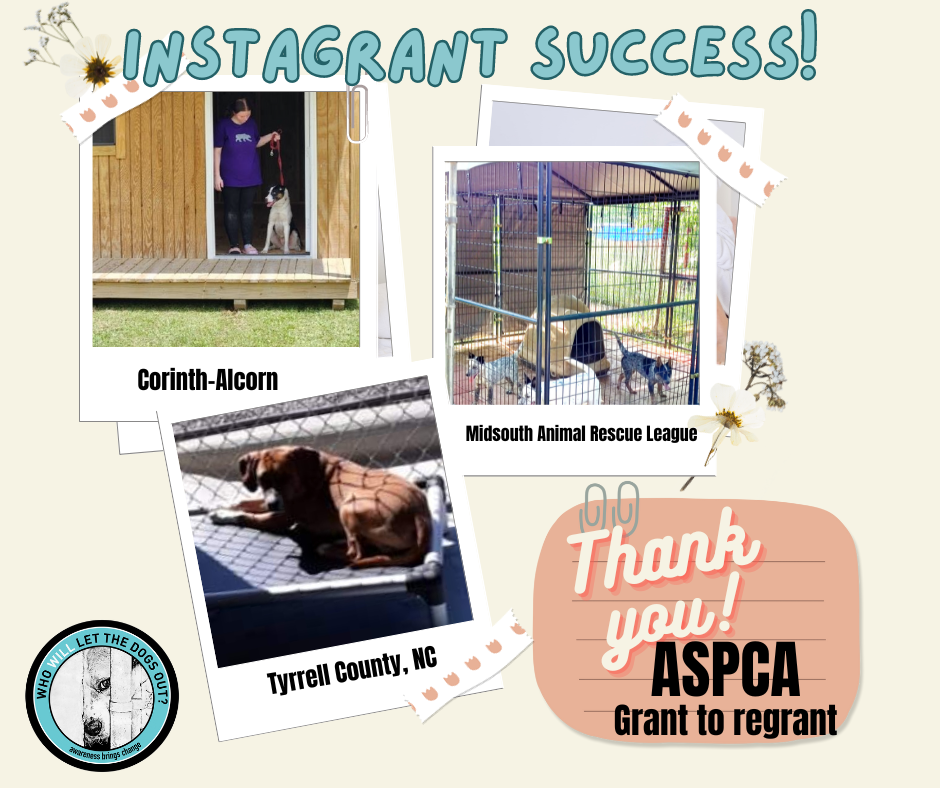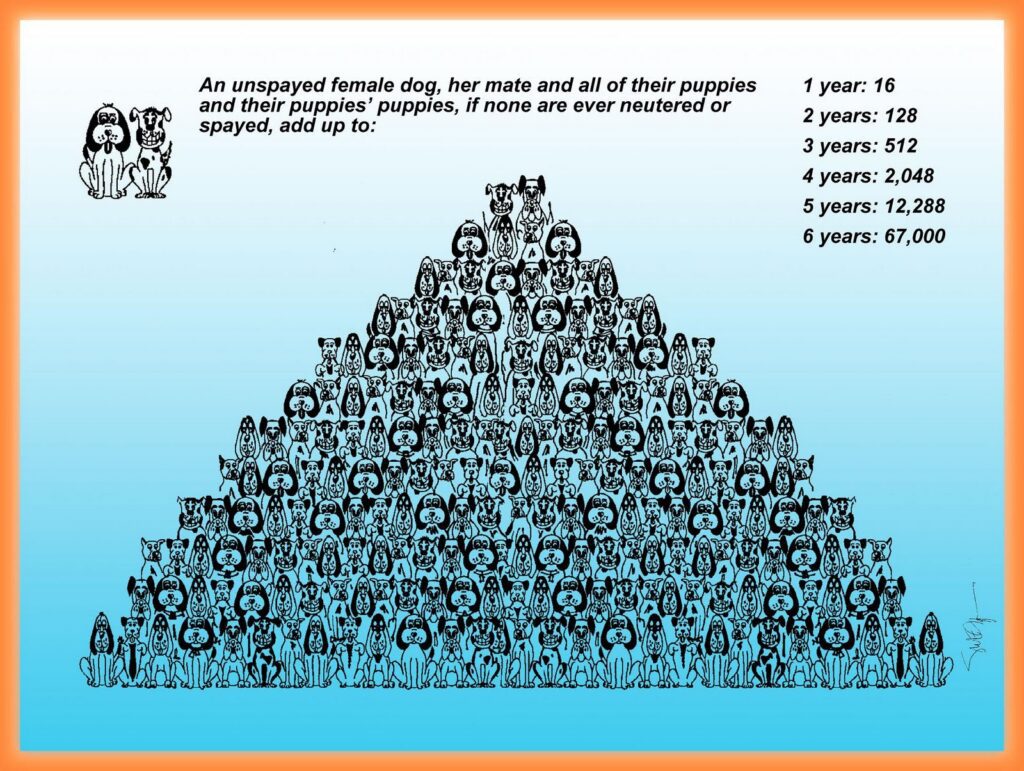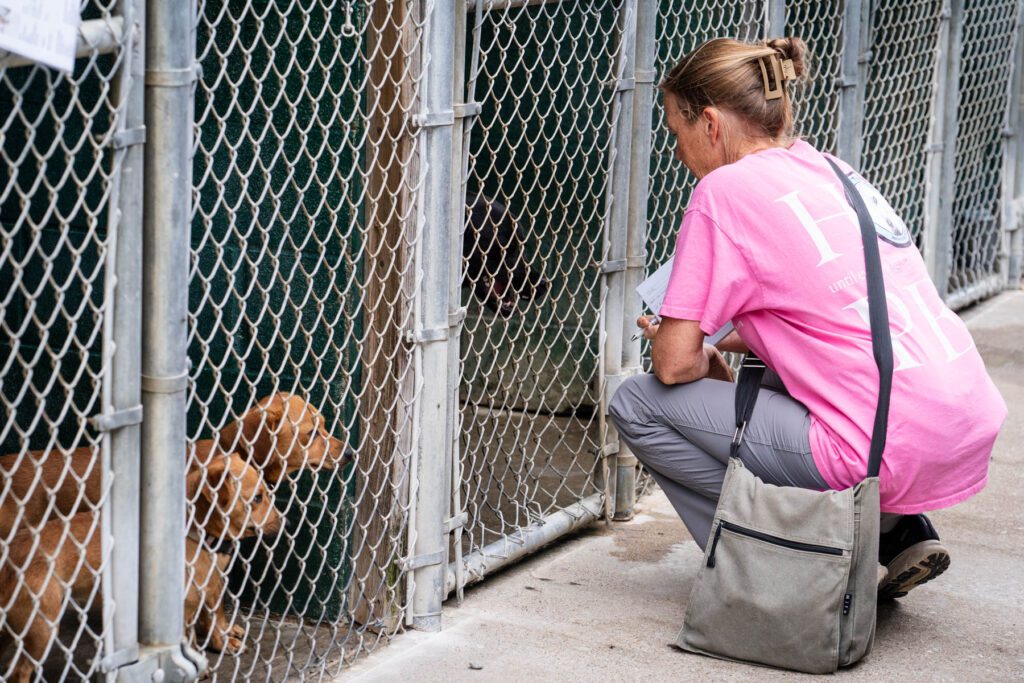I often say that money will not fix the problem of so many dogs suffering and dying in shelters, but it sure makes it easier to help them suffer less.
Too often, though, the places that need money most are the least able to ask for it. The biggest grant-giving organizations require extensive applications that require records and budgets and tax forms and lengthy explanations and reports. Their ‘grant window’ is usually once or twice a year.
Don’t get me wrong, I’m grateful for these organizations and the money they give out, but so often it goes to the shelters and rescues that have someone on staff who has the training and time to complete the complicated grant application process. Some places even have a grant writer on staff or a staff member whose job description includes writing grants. The grant process sometimes feels like a game in which only some people know the rules.
My beef is just this—the places that desperately need money that could make a difference to spay/neuter, pay extensive vet bills, purchase preventative and vaccines, or make capital improvements that would save lives—are the places least able to apply for them.
It may be because they are municipal shelters and either the grant requirements disqualify them, or the person who would have to sign off on such an effort doesn’t work at the shelter (or understand the needs of the shelter). Or maybe it’s because that shelter does not qualify as a ‘no-kill’ shelter. Or maybe the shelter doesn’t have extensive records (or a computer to put them on), and in some cases, they may not even have internet access.






All of those handicaps aside, in the places that are truly struggling and could use the money most, there isn’t enough time to run animal control calls, care for the animals, network to rescues, get animals to vets, and engage with the community for adoptions, spay/neuter programs, or simply educate, let alone apply for grants.
Friends Of nonprofit organizations are starting to pop up all over to help, but for many of the toughest places we visit, the small staff (sometimes just one person) is on their own. This is why we started our Instagrant Program. So that we can meet a need for one of these struggling shelters without requiring them to jump through the grant application hoops. Last year our pilot program was funded by the ASPCA as a grant-to-regrant program and we were able to help two shelters in Mississippi and one in North Carolina. The ASPCA awarded us twice as much money this year and an individual donor gave us a matching amount, so we are already off and running, helping a tiny rescue in Georgia and a municipal shelter in Kentucky.

It’s my dream that the Instagrant program will continue to grow, allowing us to have an even bigger impact.
Meanwhile, I keep thinking about the big guys – the places giving out millions of dollars every year. Many of those grants are for spay/neuter and they are always well-deserved. But what if they removed some of the barriers and allowed that money to flow where it is most needed?
Say you have a million dollars and you want to have an impact on spay/neuter efforts. What if instead of a months-long process in which a shelter or rescue pleads for the money and promises to spend it well, you simply said to Veterinarians in the south, “Send us the spay/neuter bill for any municipal shelter or nonprofit rescue, and we’ll reimburse you.”
Because you could eliminate the human resources and time it takes to process grant applications, you’d automatically have more money to give out. Your money could go further, faster. And right now, with euthanasia numbers going up instead of down, we have no time to spare.


If we’re serious about fixing this problem and we want to make spay/neuter affordable and accessible, why do we make it so expensive and difficult for shelters and rescues to spay/neuter their animals? Sure, I realize you have to have a little more structure than that, and of course, there is room for abuse, but going directly to the vets would streamline things. Maybe you have a program in which rescues/shelters register and you have vets that agree to be a part of the program. It’s a win-win because the veterinarians know they will get paid. And the rescue can focus its efforts on something other than raising money for spay/neuter, or applying for grants.
Maybe it’s crazy, but the fact that the numbers of unwanted puppies and kittens continues to go up and not down despite all the efforts we’ve made, means what we’re doing is not working. Or it’s not working fast enough. And it’s not recession or pandemic proof. One pandemic and economic turmoil has set the rescue movement back years.
So, how do we turn this tide? I’m tired of lamenting the situation, let’s find some new solutions.
Even if we sorted out how to pay for it, finding available veterinarians and surgery slots is a challenge for nearly every shelter we visit. What if instead of relying solely on vets, we certified vet-techs to perform spay and neuter surgeries? I’ve been told by more than one shelter director (and several vets) that cat neuters take only minutes and ‘anyone’ can do them.
I’m not advocating for rouge neutering, but when you consider how little time vet students spend of spay/neuter training, how few vets want to spend their days performing spay/neuter surgeries all day long, and the huge needs, it makes sense to come up with another system. What if vet tech students could opt to take an additional year (or semester) of study to receive a spay/neuter certification? While I don’t believe spay/neuter is the only answer, it is a big piece of it.
What ideas do you have for improving access and affordability of spay/neuter services?
There seems to be no end to new ideas in fundraising, and we try to feature all the great ideas we hear about in our Resource Guide on the website. If you need a new idea, be sure to check it out. And if you have a great idea we haven’t included yet, please email us: WhoWillLettheDogsOut@gmail.com.


Until each one has a home,
Cara
If you want to learn more, be sure to subscribe to this blog. And help us spread the word by sharing this post with others. Visit our website to learn more.
You can also help raise awareness by following/commenting/sharing us on Facebook, Instagram, YouTube, Tik Tok, and the Who Will Let the Dogs Out podcast.


Learn more about what is happening in our southern shelters and rescues in the book, One Hundred Dogs & Counting: One Woman, Ten Thousand Miles, and a Journey Into the Heart of Shelters and Rescues (Pegasus Books, 2020). It’s the story of a challenging foster dog who inspired me to travel south to find out where all the dogs were coming from. It tells the story of how Who Will Let the Dogs Out began. Find it anywhere books are sold. A portion of the proceeds of every book sold go to help unwanted animals in the south.
For more information on any of our projects, to talk about rescue in your neck of the woods, or become a WWLDO volunteer, please email whowillletthedogsout@gmail.com or carasueachterberg@gmail.com.
And for links to everything WWLDO check out our Linktree.



Sarah
Thank you for this. I help run a “Friends of” non-profit to support our local municipal shelter and community members in need. Through a small local grant and our fundraising efforts and a local vet office partner we’ve been able to provide a quarterly low cost spay/neuter clinic to our local community members. It’s only 20 spaces per quarter but the response so far has been great with all 20 spaces filling within a day of the offering and a waitlist created. To say there is a need is an understatement. We’re hoping to be able to request more grant money during the next open cycle and until then we’ll continue to do the best we can with the funding we have.
Cara Achterberg
Your shelter is lucky to have you – we need more Friends Of groups to do exactly what you are doing. It could truly help turn the tide. Thanks for your lifesaving work!